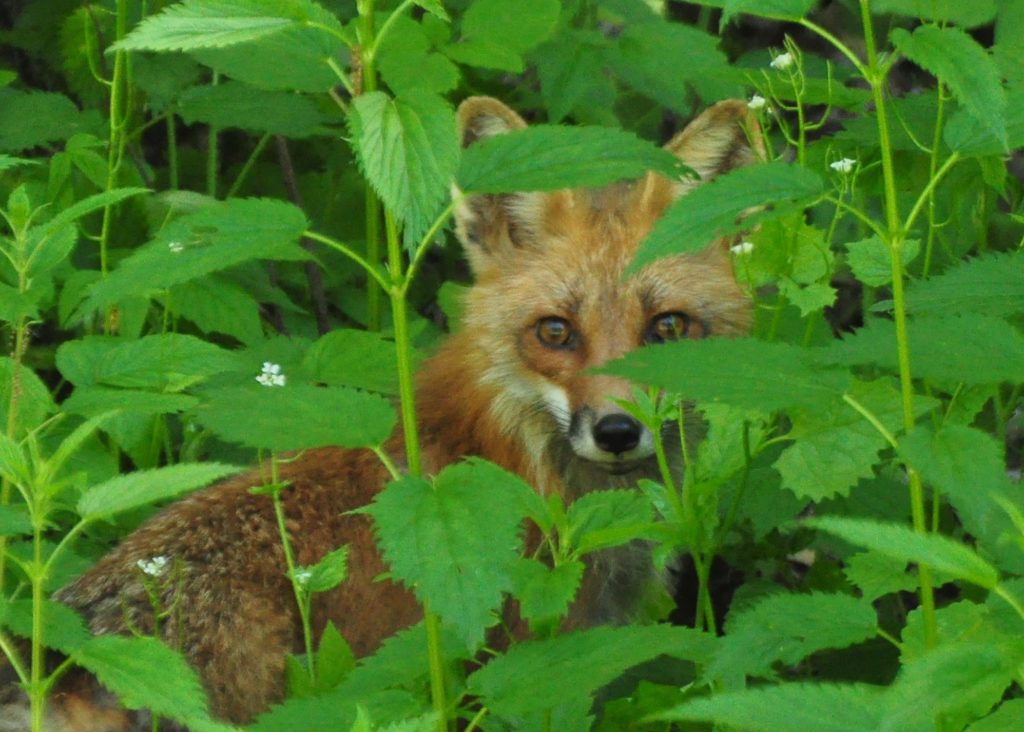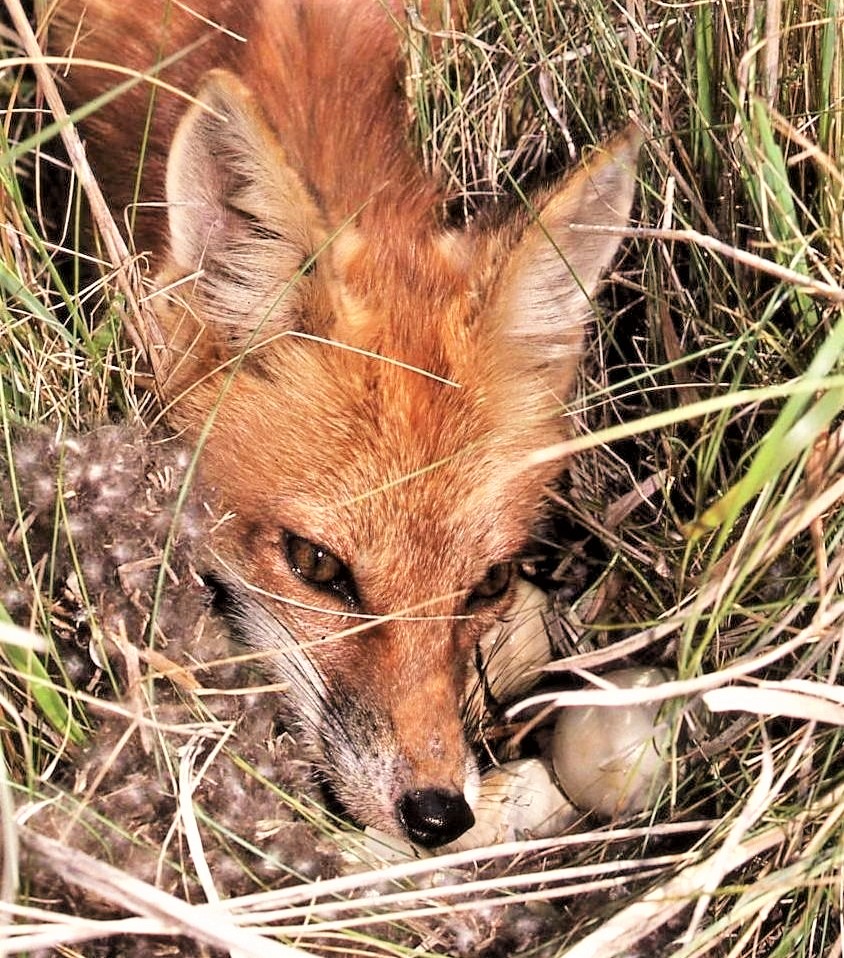Photography courtesy of Lowell Washburn, all rights reserved.
I wish I had kept track of how many calls I’ve received this year regarding the dramatic invasion of red fox into the residential neighborhoods across Northern Iowa.
There have been “fox on my patio” calls — Fox crossing the deck, fox under the deck, fox walking down the front sidewalk, fox with pups by the garden, fox chasing squirrels, fox chowing down on squirrels, and fox begging for food in the Ventura school yard. The list goes on.

Where I live in Cerro Gordo county’s Oakwood area near Clear Lake’s south shore, fox populations are through the roof. Earlier this week, I watched as an adult red fox trotted down South Shore Drive completely ignoring afternoon traffic, including those vehicles who slowed and honked for the fox to yield the right of way.
This was not the first encounter. While I was out fishing one morning, my wife Carol called to report that a fox was sitting beneath our dining room window tame as could be, acting as if it owned the place. Later in the summer, I was in the backyard messing with a turkey call when an adult fox came running to my position. Hoping for a turkey dinner, the fox was obviously disappointed – but not overly alarmed — when it discovered that I was the source of the yelping. Instead of running the other way, the fox merely viewed me with obvious disdain.

The sudden surge in fox numbers is by no means unique to North Iowa. Instead, it is occurring in communities, large or small, across the state.
So, why is a predator best known for its elusive nature and crafty wariness, suddenly moving into town to take up residence in areas that probably haven’t seen a red fox since the 1800s?

Although theories abound, no one can really say for sure. An abundance of food may provide part of the answer. Red fox are omnivorous which, in Northern Iowa, means they’ll eat just about anything from berries and insects to birds, squirrels and table scraps. Most residential neighborhoods are loaded with food – especially squirrels and rabbits which are two of the fox’s favorite taste treats. In at least two cases that I know of, people are actually feeding fox cat food and table scraps which the opportunistic foragers readily accept. This probably explains how the fox at the Ventura school learned how to beg for handouts.
Although free food is a great temptation, the quest for enhanced security is likely the number one reason for a wild fox to become citified. Humans, along with coyotes, are the fox’s greatest natural enemies. Hunting singly or in pairs, coyotes will chase and kill fox wherever and whenever they find them. Since Clear Lake’s residential areas — at least at this point in time — are pretty much coyote free, those foxes who choose to move into town enjoy greater safety than their rural cousins.
In Iowa, red fox are important and valuable furbearers. During the fall and winter, they are eagerly hunted and trapped throughout the state. Hunting and trapping is not allowed in town, of course, which is another good reason for fox to adopt the urban lifestyle.
Whether or not it’s a good idea to have a red fox become your next-door neighbor is largely a matter of personal perspective. Some folks – especially those who already have a strong interest in wildlife – are thrilled to the sight of a wild fox crossing their driveway. Others, well, not so much. In the most extreme cases, the negative reaction to seeing a fox chewing on a bloody rabbit leg borders on hysteria.
For those on the negative side of the aisle, the two major concerns with fox are disease and safety. For some reason, people tend to assume that any mammal seen during the daylight hours must be rabid. This is not the case. It is, in fact, perfectly normal for a healthy fox to be active day or night. It mostly boils down to a case of where the fox happens to be. If a fox moves through an unharvested cornfield or brushy timber at High Noon, nobody sees. But if that same fox cruises through City Park while your family is having a weekend picnic, it’s hard to miss.
A surprising number of people are also concerned that fox will pose an eminent danger to children or pets. These fears are largely unwarranted. Fox are not stupid and the last thing they want is a confrontation with either humans or their dogs. But having said that, I’d also add that you might want to keep an eye on your cat. Cats are to fox what fox are to coyotes, if you get my drift.
There is no question that the red fox is creating quite a stir in our communities. But regardless of how you may personally feel about this crafty furbearer, one thing is certain. Love ‘em or hate ‘em, it appears as if our newest urban residents are here to stay.


 Susan Judkins Josten
Susan Judkins Josten Rudi Roeslein
Rudi Roeslein Elyssa McFarland
Elyssa McFarland Mark Langgin
Mark Langgin Adam Janke
Adam Janke Joe Henry
Joe Henry Sue Wilkinson
Sue Wilkinson Tom Cope
Tom Cope Kristin Ashenbrenner
Kristin Ashenbrenner Joe Wilkinson
Joe Wilkinson Dr. Tammy Mildenstein
Dr. Tammy Mildenstein Sean McMahon
Sean McMahon